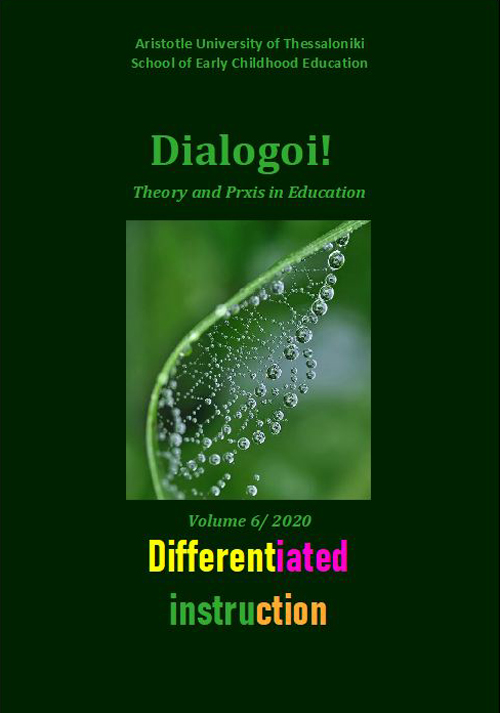Exploring the impact of blending differentiated instruction with linguistically appropriate practice towards a culturally and linguistically responsive pedagogy: An action research in a reception class

Abstract
The present action research examines the impact of Differentiated Instruction and Linguistically Appropriate Practice on migrant students’ education. Drawing on data from the academic work of many scholars (Tomlinson, Santamaria, Valiandes, Sfyroera, Chumak-Horbatsch), the effect of mixing the two practices in the learning process and students' perceptions on using the new practice are examined.
In the context of this research, seven students of migrant background (10-12 years) participated in an intervention of five research cycles. The research was conducted in a Reception Class of an Elementary School of Piraeus, in Spring 2019. The researcher-educator through participatory observation and research diaries collected the data and reflected on the results of each research cycle. Qualitative data from the focus group discussion of students about their perceptions of new practice were also collected.
Findings showed that the blending of the two approaches had positive effects on learners in terms of engagement as they showed increased motivation, their interpersonal relationships improved impressively, while they all accepted the new practice with no serious disinclinations. From the students’ perspective, they all positively commented on the use of multiple materials, the playful nature of the activities as well as the cultural and linguistic awareness promoted by the intervention.
Article Details
- How to Cite
-
Dimadi, S., & Vitsou, M. (2020). Exploring the impact of blending differentiated instruction with linguistically appropriate practice towards a culturally and linguistically responsive pedagogy: An action research in a reception class. Dialogoi! Theory and Praxis in Education, 6, 159–208. https://doi.org/10.12681/dial.22983
- Issue
- Vol. 6 (2020)
- Section
- Special Theme

This work is licensed under a Creative Commons Attribution-NonCommercial-ShareAlike 4.0 International License.
Authors who publish with this journal agree to the following terms:
- Authors retain copyright and grant the journal right of first publication with the work simultaneously licensed under a Creative Commons Attribution Non-Commercial License that allows others to share the work with an acknowledgement of the work's authorship and initial publication in this journal.
- Authors are able to enter into separate, additional contractual arrangements for the non-exclusive distribution of the journal's published version of the work (e.g. post it to an institutional repository or publish it in a book), with an acknowledgement of its initial publication in this journal.
- Authors are permitted and encouraged to post their work online (preferably in institutional repositories or on their website) prior to and during the submission process, as it can lead to productive exchanges, as well as earlier and greater citation of published work (See The Effect of Open Access).


